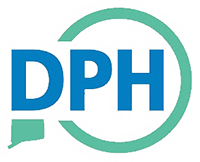FOR IMMEDIATE RELEASE: April 12, 2024
CONTACT: Chris Boyle, Director of Communications
(860) 706-9654 – christopher.boyle@ct.gov
HARTFORD, Conn— On April 10, the United States Environmental Protection Agency (EPA) announced the Final National Primary Drinking Water Rule (NPDWR) for Per- and Polyfluoroalkyl Substances (PFAS). This first-ever national, legally enforceable drinking water standard will protect communities from exposure to harmful PFAS which also are known as “forever chemicals.” The science is clear: exposure to certain PFAS can have negative health impacts, and EPA is using the latest science to establish national drinking water standards.
The new EPA NPDWR for PFAS sets regulatory limits called maximum contaminant levels (MCL) for six PFAS in public drinking water. It also requires that public water systems monitor for PFAS, provide customer notification, and report to the Connecticut Department of Public Health (DPH) if PFAS are detected. Water companies are also required to reduce customers’ exposure to PFAS in drinking water if levels exceed the MCL.
MCLs for PFAS per EPA’s new rule are as follows:
:
|
Analyte |
EPA MCL (parts per trillion, ppt, ng/L) |
|
Perfluorooctanoic acid (PFOA) |
4 |
|
Perfluorooctane sulfonic acid (PFOS) |
4 |
|
Perfluorononanoic acid (PFNA) |
10 |
|
Perfluorohexane sulfonic acid (PFHxS) |
10 |
|
Hexafluoropropylene oxide dimer acid (HFPO-DA / GenX) |
10 |
|
Mixture of two or more of the following:
|
Hazard Index* of 1
|
|
*Hazard Index (HI): The Hazard Index is a long-established approach that EPA regularly uses to understand health risk from a chemical mixture (i.e., exposure to multiple chemicals). The HI is made up of a sum of fractions. Each fraction compares the level of each PFAS measured in the water to their respective health-based water concentration. For additional information on the HI please see the following link from EPA: https://www.epa.gov/system/files/documents/2024-04/pfas-npdwr_fact-sheet_hazard-index_4.8.24.pdf
|
|
Public water systems are required to comply with the new NPDWR within five years of implementation. In the coming weeks, DPH will provide an estimated timeline for adopting this rule in Connecticut and recommendations to public water systems to prepare for implementation. DPH also will update its web pages for PFAS Frequently Asked Questions and PFAS Information for Public Water Systems which includes acknowledging the difference between the new MCLs and the Connecticut Drinking Water Action Levels for these compounds.
“Connecticut recognizes the public health threat posed by PFAS, and as a result of Governor Ned Lamont’s Interagency PFAS Task Force PFAS Action Plan, we can protect all residents, including sensitive populations, from adverse health effects due to a lifetime of exposure to these chemicals in drinking water,” said Connecticut Department of Public Health Commissioner Manisha Juthani, MD, who co-chairs the State’s PFAS Task Force. “The EPA’s decision to set enforceable limits for PFAS in public drinking water is a welcome tool that our agency can use to ensure that consumers of public drinking water are protected from these PFAS chemicals. Connecticut’s individual PFAS action levels also are consistent with the range of drinking water guidelines and standards recently established by other states, including neighboring states in the northeast.”
Commissioner Juthani added that thanks to the Bipartisan Infrastructure Law, there is a historic amount of federal funding for addressing PFAS in drinking water. To learn more about how DPH has proposed to utilize this funding to assist public water systems, including those serving small or disadvantaged communities, please visit DPH’s Drinking Water State Revolving Fund Final Intended Use Plans for 2023 and 2024.
PFAS are a group of thousands of manufactured chemicals with many beneficial properties including the ability to repel water, prevent staining, and increase heat resistance. PFAS have many industrial and consumer uses including fabric, carpet, electrical wire and non-stick coatings, food packaging, and firefighting foam used to extinguish petroleum fires.
However, toxicological studies in laboratory animals consistently show effects on the liver and immune system, and on growth, reproduction, and fetal development. PFAS can also impact the endocrine (e.g. thyroid) and hormonal systems and can disturb blood lipids such as cholesterol.
PFAS are not readily absorbed through the skin so bathing, showering, swimming, and washing dishes in water containing PFAS are not significant sources of exposure. But consuming PFAS-contaminated drinking water over many years can cause such chemicals to accumulate in the body and make it more likely for adverse health effects to occur.
Additional information and resources can be found at the EPA Factsheet for the PFAS National Primary Drinking Water Regulation. For information on DPH’s drinking water action levels and answers to some frequently asked questions, please refer to DPH’s PFAS Information Webpage.
-30-


